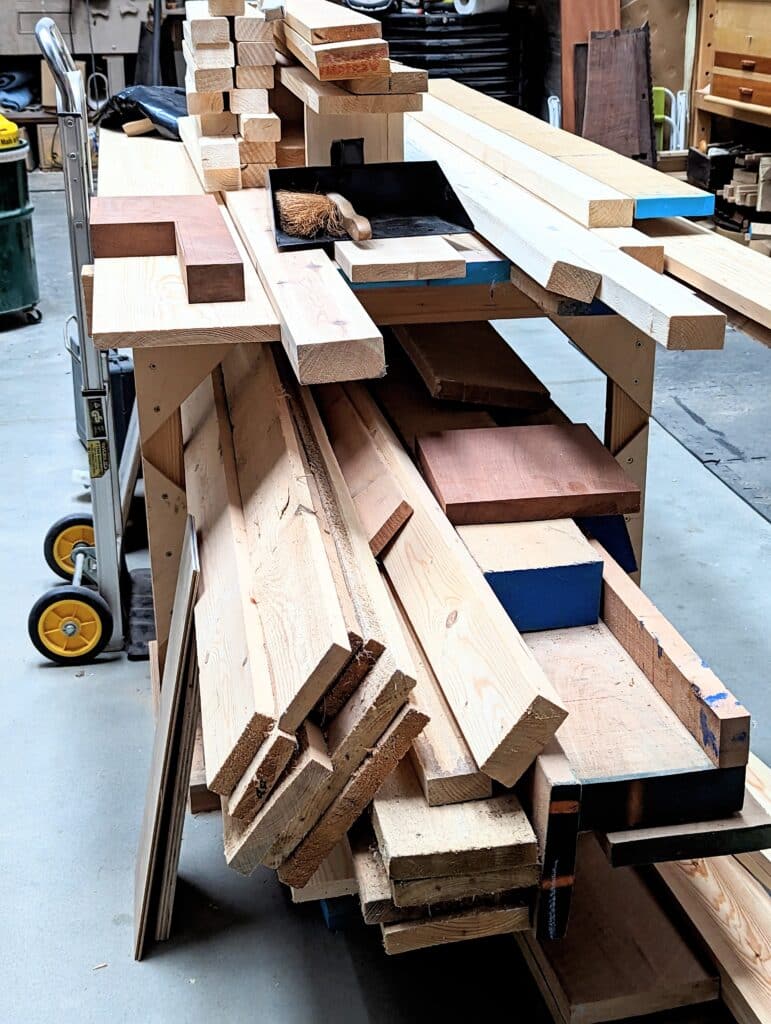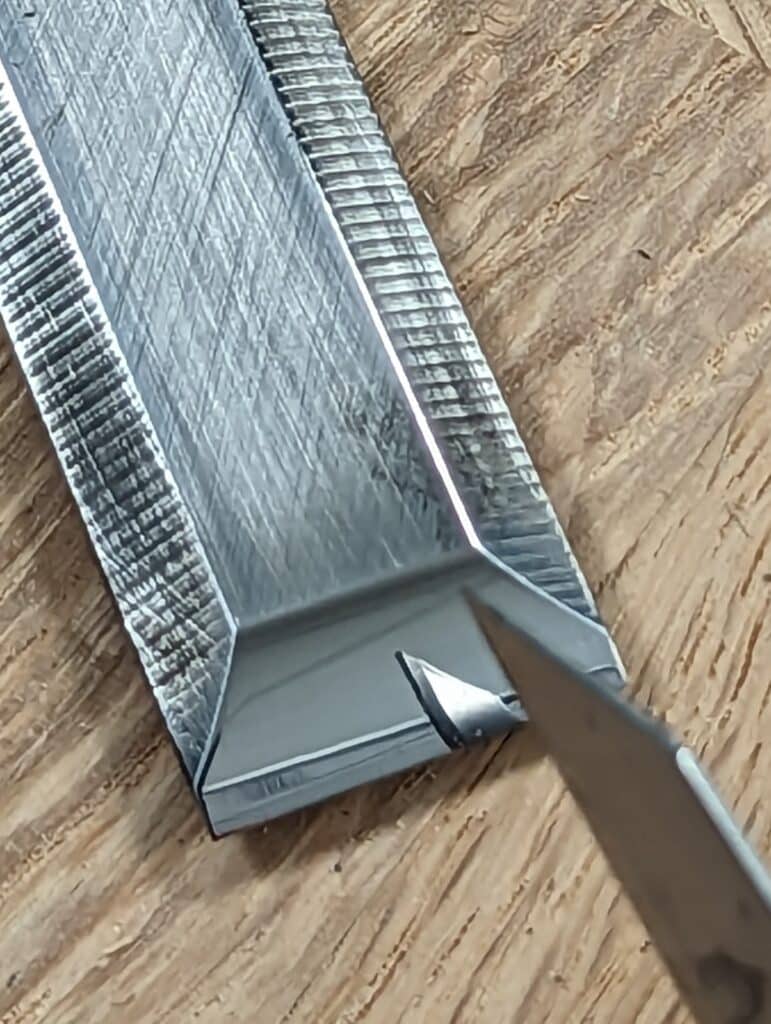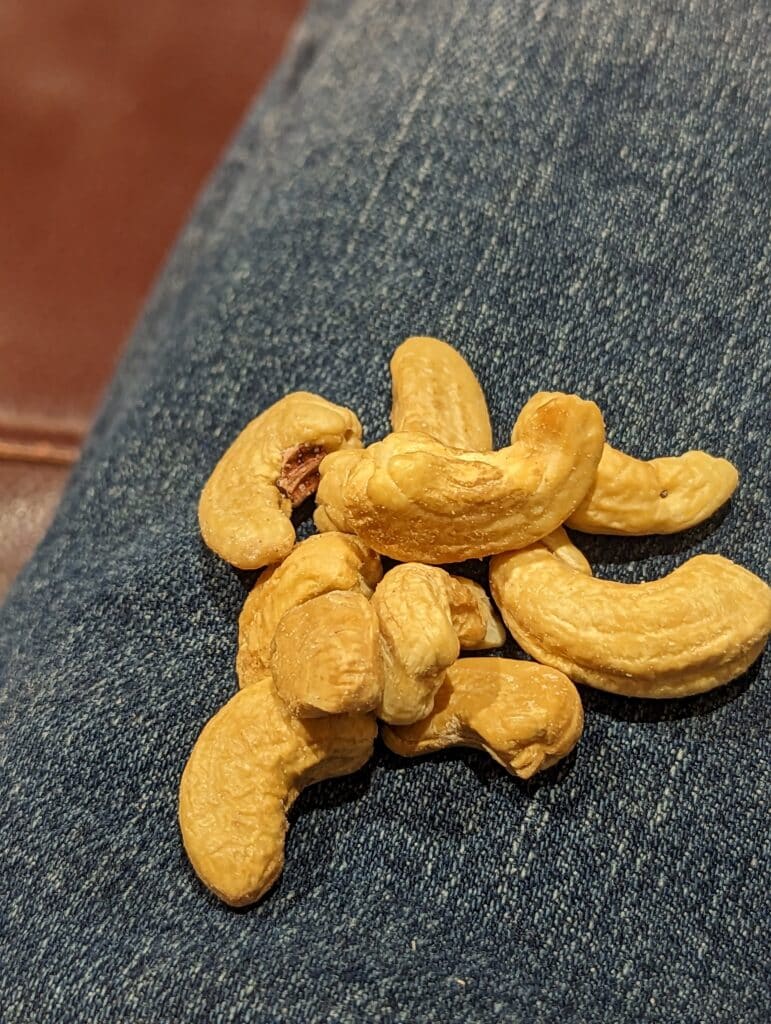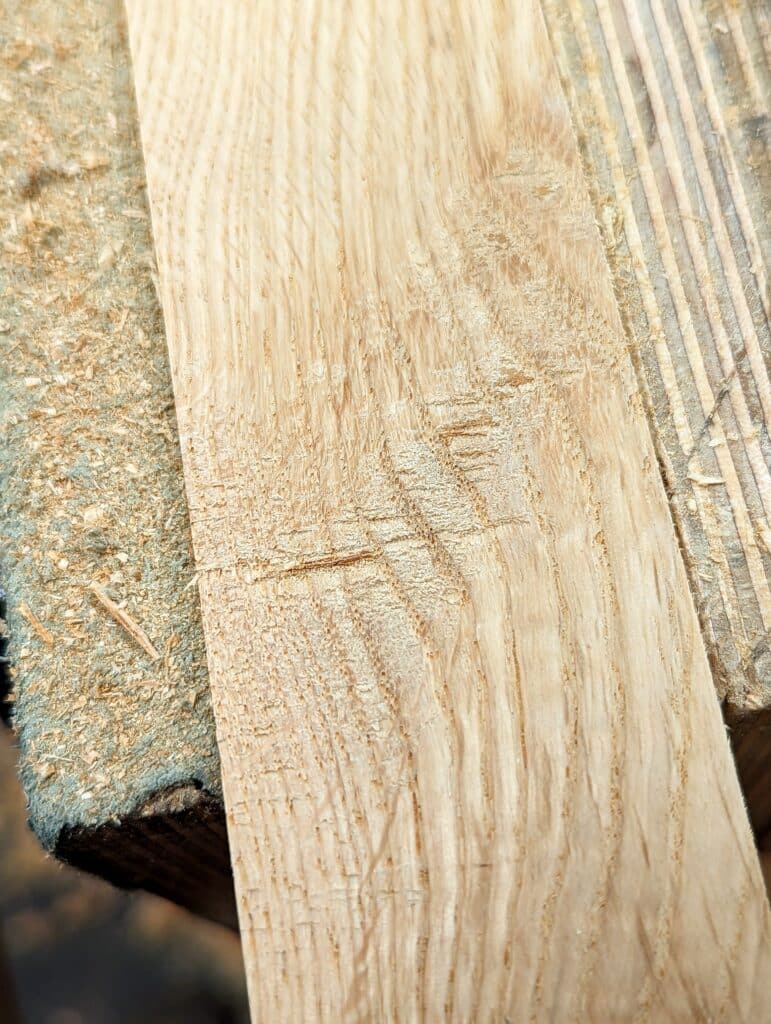The Lure of Unpredictable . . .
. . . or the lure of a mechanised performance!
The most predictable thing about wood is its unpredictability. I would say that that is the case in most natural materials used in most crafts and that is why we have such a predominance of man-made alternative materials; for any type of mass-making the materials must be controllable and equate to the mechanised methods of manufacture which them means standardising things as best we can. If there is one thing most machine manufacturing is intolerant of it’s variability and unpredictability in the materials used. Of course, some naturally occurring materials are predictable. Glass is such a material; sand, soda ash and limestone go to make up the identity of basic glass but they are combined to make a new material and are not left in their raw state. Metal ores are mostly predictable and stable as are or can be many other materials we use to make from. Science and technical controls help greatly. In our world of wood, climate control works for a period in the preparation of materials and then too in the conditions during manufacture or seasoning of it. It’s after that that we face our challenges. Ever made a perfectly fitting drawer with perfectly parallel outer edges and go in the next morning and find the drawer immovably and impossibly stuck in the opening that’s now beyond gap free? Out comes the heater to marginally shrink the wood on a localised level. Engineered boards for woodworking help manufacturers control many elements that normally affect solid wood, especially swelling and shrinkage, twist and distortion of many kinds. Other grown materials have variances in stems, fibre sizes and so on. Hence we have high-fire ceramics to produce consistent abrasion in man-made waterstones for sharpening and then too leather substitutes in plastic-coated fabric for stretchability. Genuine bonded leather is the equivalent of chipboard or pressed fibreboard. Don’t be fooled by the words genuine, bonded and leather. It’s comparable to burger meat and a steak. Both can look good and taste fine (says the vegetarian) but they are not one and the same.

In my world of woodworking, mainly the hand tool version, real wood of any and every type is the less predictable entity; I understand why machinists love the machines that make the outcome more predictable–push a button, slide the fence, adjust the depth of cut, set the power-feed and step back. The board comes out predictably parallel, twist-free and dead straight and rip-tear-free as well. But you need to work with it quickly, stack it tight between tasks, strap it down with steel bands and try to control the environment as much as possible to prevent the uptake of moisture on damp days. I therefore understand the question, “Why would anyone including you, Paul, do it by hand? Mortise holes and tenons taken from mortisers and tenoning machines fit like a hand inside a well-fitting glove and a chop-sawn mitre is a perfect forty-five and square across every single time you drop it down into the wood to cut. All challenge is eliminated and it’s fast, fast, fast.

Well, aside from the space-hogging machines take up, the cost and noise, etc, I believe in the challenge real woodworking gives me in the day-to-day. It is exceptionally good for me (and you) to encounter adversity and the occasional unpredictable and rebellious grain in wood. Does that mean never use a machine? No, not at all. There are times when I look at a sheet of plywood I want to use and I know the very best way to work the surfaces will be with a random-orbit 5″ hand sander and not a hand plane, scraper or even plain sandpaper.

I ate some cashews last night. I noticed in this batch that there was a percentage of the nuts that were dry and crunchy, I particularly liked these.

After a while, instead of dipping my fingers in the can and picking the individual nuts randomly, I looked inside for the dry, crunchy ones and started eating these in steady succession. Then I picked out a pile to eat. After a minute or two I found that I was enjoying the nuts less and less and realised that this was because all surprise was gone and there was no longer any contrast between the softer ones and the hard ones.

Going back to my former way of randomly selecting the nuts restored my enjoyment. So it is with hand-tool woodworking. I like the challenge in unpredictability. I like unpredictability. It keeps me on my toes, gives me challenge and thereby greater fulfilment. This then adds value in the reality that it has. Challenge relieves any boredom, demands critical thinking through every single move I make and the outcome brings 99% satisfaction to my very soul.

There are consequences to all the elements that handwork demands. The accuracy of knifewalls depends on how often I sharpen my knife and then the quality of the cut the sharpness of the chisel, the saw and the plane. I like looking at the placement of the tenon with the knot in the wood or where I plan to chop the mortise. Yesterday, I ploughed out a groove and before I knew it the top corner of the inner wall of the groove split and tore where it would be clearly visible. Immediately I thought of three fixes that I could do to take care of the issue in under a minute or two for whichever I chose. Sometimes a misread plane stroke tears with the touch of the plane’s cutting iron and the damage is done but not as badly had I forced it through the cut. My ‘Uh-oh!’ encounter is of minimal consequence. I flip the plane or reach for a piece of flat steel and deal with it. It’s over in a heartbeat and I would not trade those for any other piece of kit. A sawn knot in a tenon on one side of the tenon might need a pare cut on the opposite side. These are the high-demand, minute-by-minute decisions that only ever enhance my experience of immersive woodworking. There is nothing minimalist about it – it’s total maximisation.


Hi. Wish I could connect via standard methods but have been unable to get your website to allow for messages. I ordered the plane kit but can’t access the plans to download. The security app just sits there trying to decide if I am human. Very frustrating!
Sorry to hear that you were unable to get in touch in the normal way. I have emailed you directly.
Any chance this page gives you what you need?
https://paulsellers.com/making-the-paul-sellers-router-plane-from-a-kit/
I was cleaning up this bevel rip cut with a plane recently for the corner pieces of some tapered columns, and these columns were finished in pvc trim. My coworker made the joke that I was making forever shavings, which is a really funny way of saying casting a bunch of potentially toxic to the soil shavings out into the world with the wind, so environmental impact is something that I would say is an issue with wood substitutes potentially. I did clean up after myself of course, but I’m sure the production of that stuff isn’t without some kind of hazards waste being produced, and it’s kind of all in the name of stability and being cost effective in comparison to natural wood with the same ability to take on the elements, so not exactly what you’re talking about, but just another reason we should all try to avoid wood substitutes.
I’ve just been staring at the photo of the chisel tip and knife for a good ten minutes and finally twigged I was looking at the reflection of the knife tip.
That’s a well stropped chisel – shiny!
Metals are much less predictable than you would think. They stress relieve, expand, shrink, harden, distort, etc. Not as much as wood of course 😺
Even glass is flowing. But very slowly, indeed… you see it in very old windows.
That is because it is a very viscous liquid.
That’s the weird thing about control: the more you try to control something, the more it controls you. And at some point, exerting control over something ends up being to our own detriment. Using hand tools requires giving up control, whereas power tools exerts more control, but you also have to manage that control safely while worrying about hearing loss and lung cancer from the massive amount of dust. It even applies to our oldest technologies: agriculture and cities.
There is a danger in forgetting that even naturally occurring things can pose a danger to some of us.
A former work mate developed a severe reaction (anaphylaxis) if exposed to saw dust from Western Red Cedar. Thats not to much of a surprise when you think back to Georgian furniture makers who used cedar as drawer linings to help to stop infestation by moths.
A few years ago we worked on lab furniture made from Iroko, this made my nose stream and my eyes run. In the main natural equates with good but in all things take care.
I fully agree with Anne’s remarks regarding metals. Steel fabrications can shrink a minimum of 0.5mm/m due to contraction caused by welding. I’ve had fabrications with large welds shrink longitudinally by up to 20mm over less than 3m, (I’m talking at least 16mm thick plate). Aiming for +/-2mm after welding requires some skillful compensation of the primary parts; and often some very skilled heat-straightening (only a person can do this). When machining a fabrication it can also distort due to the release of internal stresses.
Thanks Paul for another good blog. cheers Alan (IWE)
The natural world is chaotic it is what gives the overall joy to life. When we try to control too much the joy declines, whether it is a perfect weed free garden, plywood or people the joy is in the diversity. Thank you Paul for all that you do.
Metal working is not that simple, having worked in the industry for 40 years I should know.
Using power tools in woodworking is not that simple either, a lot of people get sucked into that false belief. An entire industry worth billions of dollars is built on selling tools for woodworking. As to what gives you satisfaction…..well now , that is up to the individual.
Perhaps I need to hang with different people, but most of the people I know wouldn’t know the difference between an IKEA chair or a classic museum piece.
“Metal working is not that simple, having worked in the industry for 40 years I should know.” But you and another did complicate my simplicity. Most people are capable of soldering tin plate, converting one tool to another, regrinding steel and such. No one is talking making metal alloys or tolerances of thousandths of a millimetre using milling machines and such. My talking about metalworking is at the down-to-earth practical level if not the lowest level and thereby perfectly simple and highly predictable. I am yet again speaking of handwork and not milling machines and complex metals needing stress relieving and knowledge of metallurgy. If and when I need a cutting iron or a knife blade I simply soften the the hardened steel of a file or other blade using a blowtorch, cut out what I want with a hacksaw, file or grind to shape, tap it for a thread and then reheat to harden. I’ve made perfectly sized plough plane cutting irons to match ply thickness in just a few minutes and been back to ploughing my grooves. I’ve many useful things from lampshades to live mousetraps from plate tin from empty oil cans, made the coil springs and threaded the rod ends for nuts made again with files and taps and dies, soldering the folded plate, etc. This is not complex and it is DIY for anyone to do.
Oh, and machine woodworking is incredibly simple. It cannot get any simpler! Dial in the distances, set the stops and push wood into the power feed. AI will take this over. Why? Because it is so very easy to do!
There are two ways to tell others about things; one says it’s very complicated to do and there are many, many complexities to it and the other starts with a basic question, “What is it you want to make or do?” Most metalwork seems quite predictable. I walk into the engineers workshop across from me and show him what I cannot do myself and he tells me how he would do it. It’s predictable though it requires some complex machining.
Paul,
thank you for your thoughts! I‘m following your hints, tips and projects for a while. Always a pleasure! Most of them are a source of things I like to build in the winter. During summer I am traveling through Europe with a motorhome. Even now I get benefits from your advices. When we travel we just have a rough plan where to go, but details we hand over to coincidence. Some days are good, some are not but the contrast makes it interesting anyhow! Like working with wood. Finding the perfect log of wood is like fing the perfect spot in nature to stay for a night or two.
We are heading north, try to reach the Lofoten but are quite not sure if different spots will catch our interest more intense….
Thank you again for sharing your thougts with us!
Manfred
I much prefer the dryer, crunchier cashews! 🙂 I also like mixed nuts for the same reason of being surprised by my preferred varieties.
I really enjoyed this blog (as usual). I especially liked the challenge relieving boredom, demanding critical thinking – that’s the best part about hand tool woodworking for me. And it’s usually the wood that introduces this for me. I like the design aspect, planning etc. and challenges they bring up, but when you’re ‘getting down to it’ and working the wood, up pops a challenge! A challenge from nature, so to speak,
“There is nothing minimalist about it – it’s total maximisation” – really sums it up. Thanks (again!) for your insight, Paul.
Paul,
I don’t understand. Are you saying wood that’s been milled by machine reacts differently than does wood that’s been milled by hand? That the wood I take the cup or twist out on a jointer then flatten in a planer will warp more than the wood you do by hand? So that then I have sticker it and bind it to a flat surface and you don’t? I really don’t think so, unless it takes you a full week to finish everything, so it has time to acclimate by the time you’re taking your last passes. That’s possible, though you’re ignoring the fact that I mill it, sticker it and leave it for a week, then come back and do the last 1/8″ after everything is stabilized.
Your need to demean using machinery makes you misrepresent the process of using machinery. In nothing I make is the saw, the jointer, the planer or any other machine the last thing that touches any wood surface; it’s the plane (one of my grandfather’s), the chisel (my godfather’s) or the scraper that last touches the wood, just like you do, but I spent 1/10 the time doing the rough milling than you did. Yes, I had to wear ear-muffs, but I don’t have an entire week to spend doing rough milling by hand. My time has value, and were I to take 30 hours extra to process a batch of wood I would have to charge $3,000 more for my product. I paid less that $1,000 for my jointer and planer, and that enabled my to produce the exact quality product I want for $3,000 less. Every other week or so, $3000 less for an initial investment of $1,000. Okay, $2,000 but a guy’s entitled to a little profit, no?
Oh, another question. The mirror finish on your chisel is magnificent, but I have to ask why? The part that is shiny has no impact on the edge. You have a nice little micro-bevel, that’s the only thing that needs honing to a mirror finish. Why hone the main bevel above 400grit?
1: there are a difference between hobby and work. One demands efficiency, the other not. You do not NEED to use a machine to process your wood. Which I think is Paul’s point. So no real need for justifying your process. You do it however suits you best. 🙂 I do this as a hobby, and I use some machines too. Just because my time is precious and I find hand prepping tedious and boring, except for smaller stuff.
2: you do not get the poiunt about that bevel. The primary bevel, or the part that would be one, does not need to be polished at all. Smooth-ish is quite enough. But hand sharpening means that the whole bevel will be worked. It does not take any more time; it is just a side effect of the process. One do not TRY to polish the whole bevel, but it happens automatically through the rocking motion used for the sharpening.
Using a honing guide would certainly make your point valid.
I do use the Veritas mkii one, but I don’t polish my primary bevel at all. 5-6 strokes on the medium and fine just to «posh it up» a little.
The secondary, or micro, bevel is polished though. And of course the back.
I do not answer for Paul, but I did want to point these things out and not let your reply stand unanswered.
The point is just that you missed the point! 🙂 Happens to all of us.
Paul, how small a piece of wood would you save? I have gone a few rounds with myself in order to reduce the offcut pile. I don’t want to end up as a “wood hoarder”. 🙂 I made an “offcut bin” on wheels, about 40-50cm cubed. I toss all small scraps in there, and when ever I need a small piece I rummage through it. I (partly) empty the bin from time to time into my fire pan when we want to start a fire for some sausages, pizza or just to enjoy a small campfire in the garden.
In general I don’t want to toss any piece of wood as everything can be utilized – but then again I don’t have a big shop to keep too much of it.
How should one store small offcuts? What should one consider? Sticker and stack or just stack it?
You might have touched on the topic, but I can’t remember if I have read any articles. Perhaps an idea for a blog post, Paul? 🙂